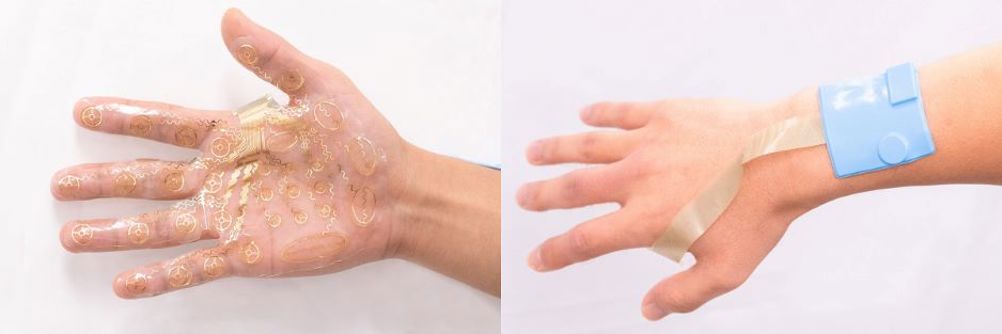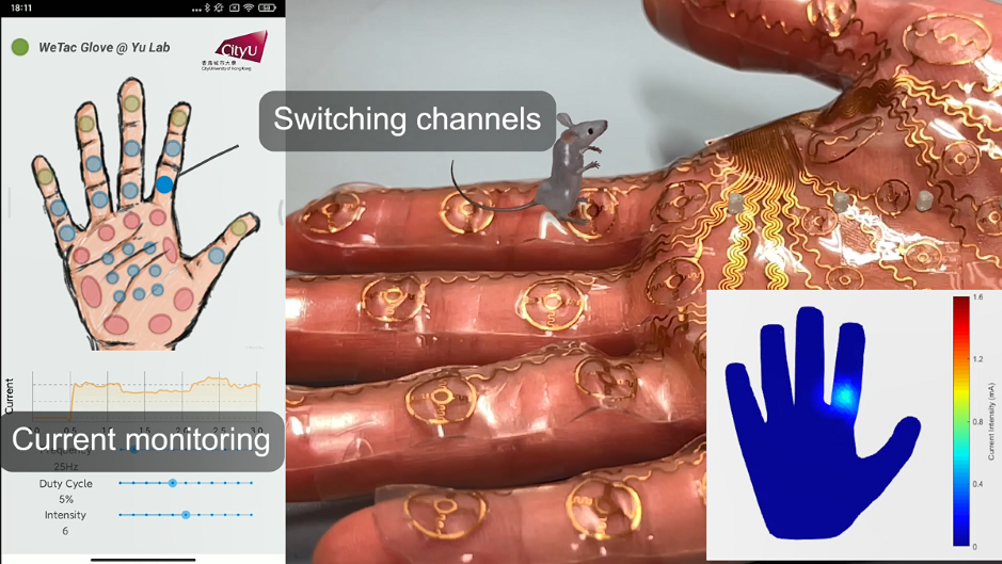The system, developed by a team at the City University of Hong Kong (CityU) is worn on the hand and has soft, ultrathin features. It collects personalised tactile sensation data and has potential applications in gaming, sports and skills training, social activities and remote robotic controls, researchers said.
“Touch feedback has great potential, along with visual and audial information, in virtual reality (VR), so we kept trying to make the haptic interface thinner, softer, more compact and wireless, so that it could be freely used on the hand, like a second skin,” said Dr Yu Xinge, associate professor in the Department of Biomedical Engineering (BME) at CityU, who led the research.
Together with Professor Li Wenjung, chair professor in the Department of Mechanical Engineering (MNE), Dr Wang Lidai, associate professor in the Department of Biomedical Engineering (BME) and other collaborators, Dr Yu’s team developed the system which is described in the scientific journal Nature Machine Intelligence.
Existing haptic gloves rely mostly on bulky pumps and air ducts, powered and controlled through cords and cables, which hinder the immersive experience of VR and AR users, the team said. WeTac aims to overcome this with its wireless, skin-integrated electrotactile system.
The system comprises two parts: a minituarised soft driver unit, attached to the forearm as a control panel, and hydrogel-based electrode hand patch as a haptic interface.
More on VR
The entire driver unit weighs only 19.2g and is small (5cm x 5cm x 2.1mm) enough to be mounted on the arm. It uses Bluetooth low energy (BLE) wireless communication and a small rechargeable lithium-ion battery. The hand patch is only only 220 µm to 1mm thick, with electrodes on the palm.
According to the team, it exhibits great flexibility and guarantees effective feedback in various poses and gestures.
“Electrotactile stimulation is a good method to provide effective virtual touch for users,” Dr Yu explained. “However, as individuals have different sensitivities, the same feedback strength might be felt differently in different users’ hands. So we need to customise the feedback parameters accordingly to provide a universal tool for all users to eliminate another major bottleneck in the current haptic technology.”
WeTac’s ultra-soft features allow threshold currents to be easily mapped for individual users to determine the optimised parameters for each part of the hand.

Based on the personalised threshold data, electrotactile feedback can be delivered to any part of the hand on demand in a proper intensity range to avoid causing pain or being too weak to be felt, the team confirmed. In this way, virtual tactile information, including spatial and temporal sequences, can be reproduced over the whole hand.
The WeTac patches are worn on the hands to provide programmable spatio-temporal feedback patterns, with 32 electrotactile stimulation pixels on the palm instead of the fingertips only. The average centre-to-centre distance between the electrodes is about 13mm, providing wide coverage across the hand.
Safety measures have been built in to protect users from electric shock, and the device’s temperature is maintained in a range of 27 to 35.5°C to avoid causing any thermal discomfort during continuous operation.

WeTac has been successfully integrated into VR and AR scenarios, and synchronised with robotic hands through BLE communication. Users can feel virtual objects in different scenarios, such as grasping a tennis ball in sports training, touching a cactus or feeling a mouse running on the hand.
Dr Yu describes it as a ‘powerful tool’ for providing virtual touching, adding that the team believes it is inspiring for the development of the metaverse, human-machine interface and other fields.











Deep Heat: The new technologies taking geothermal energy to the next level
No. Not in the UK. The one location in the UK, with the prospect of delivering heat at around 150°C and a thermal-to-electrical efficiency of 10-12%,...